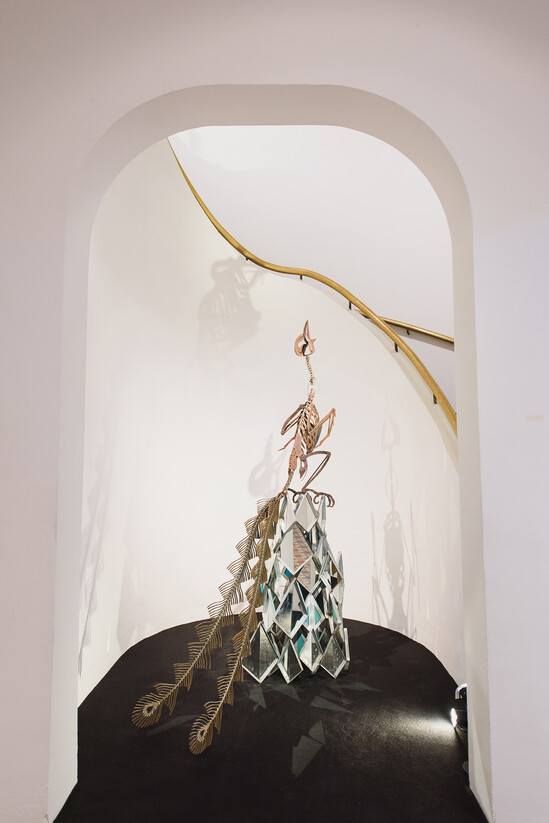Tang Da Wu, an influential figure in Singapore’s art history, was the founder of The Artists Village (TAV) in the 1980s. TAV was a loose collective of avant-garde practitioners who housed themselves in a kampung, or village, in the Sembawang neighbourhood – thus creating the first artists’ colony in Singapore. Sembawang was then considered an area on the fringe of urban development, being located in the far north of the island, and Tang’s choice to set up both home and artistic community there recalls the tradition of utopian societies founded in sites far removed from the traditional centres of civilization
Sembawang Phoenix is also known as Shen Ba Huang, or 深疤凰 in Chinese. The latter is a transliteration – a phonetic rendering – of the area’s name. The piece was originally presented as an accompaniment to Tang’s Sembawang installation, and is an image of an avian species colloquially referred to as the “tok-tok bird” (the large-tailed nightjar, Caprimulgus macrurus). This creature would make its appearance nightly near the artist’s home in Sembawang, during his days with The Artists Village colony, and announce its presence with a distinctive “tok-tok” call. The Chinese characters were deliberately chosen by Tang: together, they mean “the phoenix of the deep scars”, and the diamond-shaped mirrors on which the sculpture is perched represent the creature’s tears, as it emerges from the ashes of its rebirth, or renaissance.

